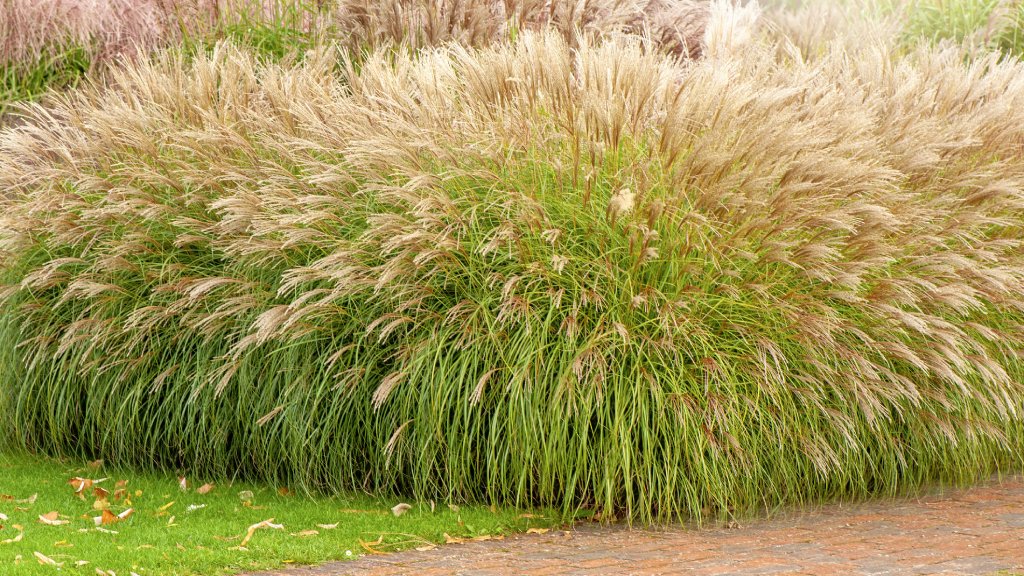Ornamental Grasses: A Must-Have For Every Landscape
Dramatic and decorative ornamental grasses have become popular substitutes for turf grass.

The graceful, arching foliage of ornamental grasses is showing up in landscapes around the country. With colorful plumes they offer year-round beauty while encouraging the presence of wildlife, providing nesting habitat and food sources. Many tall decorative grass plants are also low-maintenance native plants that establish easily and are drought-resistant.
Are you considering introducing ornamental grasses for landscaping? Read on for information about these perennial grasses and how to use them on your property.
Why You Should Grow Ornamental Grasses
Lawn turf is losing popularity with homeowners today. Native perennial grasses require less irrigation, fertilizer, and pesticides than regular grass. They also add unique patterns, colors, and textures to the yard, with grass shades ranging from traditional green to blue, red, and purple. They increase the appeal of the landscape in all four seasons, including a snowy winter garden. The flowering heads provide other color shades.
Ornamental Grasses for Every Garden
Ornamental grasses are not cookie-cutter plants. There are many species of native grasses available, and the range of sizes, shapes, and colors is amazing. Tall vertical decorative grasses, like giant reed grasses, can even work as hedges, while others are mounding and low to the ground.
If you are just considering adding ornamental grasses to your landscape, first get an overview of the different types available for your area. Mixing and matching several different shapes and sizes of grass adds interesting dimensions to the yard.
Types of Ornamental Grasses
Some ornamental grasses grow most actively in warm weather, while others shoot up during cooler weather. These have come to be known as warm season grasses and cool season grasses.
Warm season grasses turn brown and stop growing in the winter. They look dead but are only dormant, and you can count on them turning green in spring or early summer when the weather warms. They love the hot, dry midsummer weather and thrive during this period before slipping back into dormancy in late fall.
Sign up for the Gardening Know How newsletter today and receive a free copy of our e-book "How to Grow Delicious Tomatoes".
Cool season grasses do just the opposite. They like it cold, growing best when the temperatures are between near- freezing and 75 degrees F (23.8 C). During the midsummer heat, they brown and look dead, but when temperatures fall, they will get green again.
Invasive Ornamental Grasses to Avoid
If you’ve been warned that these decorative grasses are invasive, your sources are only partially wrong. Some ornamental grasses are invasive and should be avoided, since they can quickly take over your landscape as well as neighboring land. But the vast majority of ornamental grass species are not invasive.
Which ones are invasive? Invasive ornamental grasses vary among regions, so check with your state’s invasive plant listing before selecting grasses. A species that’s invasive in one locale may not be in another, given the climate and soil differences. Some invasive grasses to generally avoid include cheatgrass, running bamboo, fountain grass, and ribbon grass.
How to Care for Ornamental Grasses
Plant warm season grasses in spring and cool season grasses in either spring or autumn. It’s cheaper to use plugs or bare root plants for groundcovers or large area plantings. If you are only installing a few specimen grasses, use container plants. Plant so that the crown sits just above the soil surface.
You’ve probably selected your grasses in part for their drought tolerance. But during the first year, don’t stint on irrigation. All plants need water for the period after planting. Grasses become drought tolerant starting the second year.
Save money on fertilizer too, by not using it! Fertilizer is not only unnecessary for native grasses, it’s actually detrimental and can encourage invasiveness. Avoid rust diseases (orange or orange-brown patches on leaves) by maintaining good air circulation around the plants.
Over the longer term, all you will have to do is cut back the growth in late winter or early spring if the dead stems become a fire hazard. When the individual grass plants get so large that their center dies, divide the clumps.
Ornamental Grass Landscaping Tips
How much water should you provide your grasses the first year? Most grasses appreciate about an inch of supplemental water during the first few weeks of establishment. Water often if your soil is sandy, since the applied water will quickly pass through the soil.
How much should you cut back your ornamental grass plants every winter? Take them back to about 8 inches (20 cm) above the soil level.
Frequently Asked Questions
Do You Need to Cut Back Ornamental Grasses Every Year?
It’s a good idea to cut back ornamental grasses in late winter. That ensures healthy new growth in the new year.
What Is the Fastest Growing Ornamental Grass?
More than a few ornamental grasses grow fast. Unfortunately, many of the fastest-growing grasses are also considered invasive in some regions, so check with your local authorities at a nearby county extension service before planting. These include the Phyllostachys bamboo species that can grow to full height (15-50 feet) in one year; giant reed grass, feather reed grass, and hardy pampas grass.

The only child of a horticulturist and an English teacher, Liz Baessler was destined to become a gardening editor. She has been with Gardening Know how since 2015, and a Senior Editor since 2020. She holds a BA in English from Brandeis University and an MA in English from the University of Geneva, Switzerland. After years of gardening in containers and community garden plots, she finally has a backyard of her own, which she is systematically filling with vegetables and flowers.

